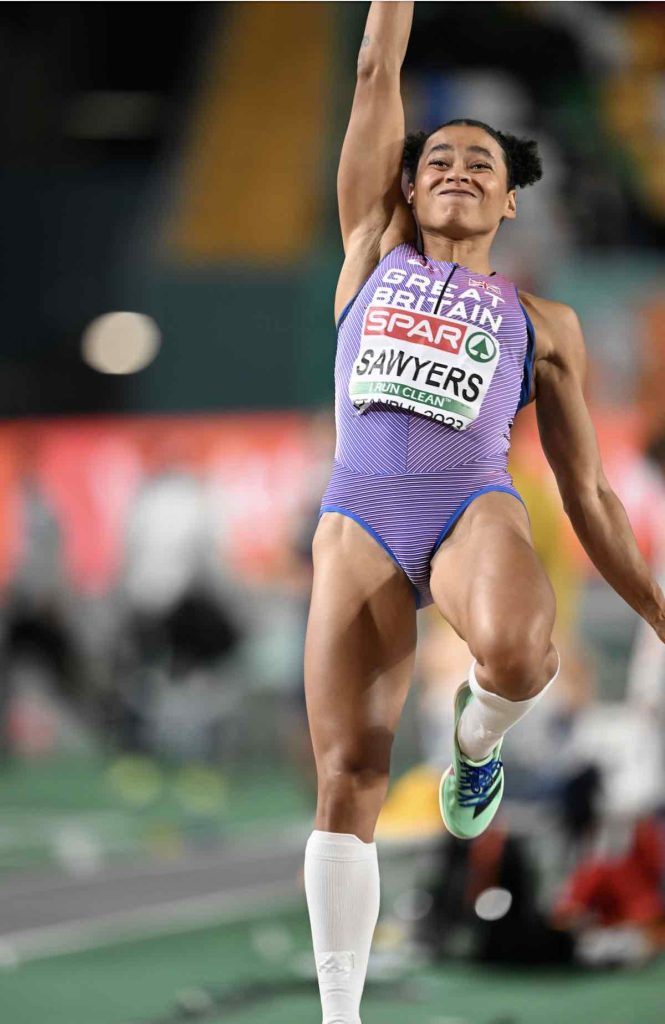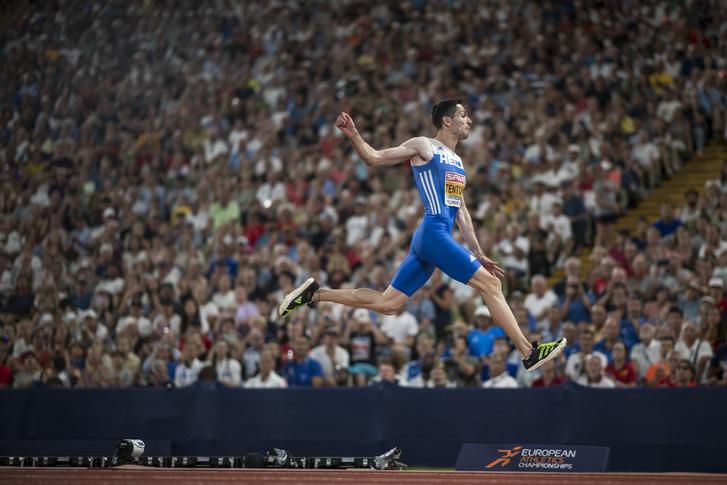New debate over long jump change takes off as Lewis flies into the argument.
RelatedPosts
Did April Fool’s Day come early this year? Carl Lewis believes so.
At least, that was his reaction to the plan recently announced by World Athletics to trial a new format in the long jump whereby athletes will take off from anywhere within a zone rather than having to do so within the front line of a board.
The idea is to lose fouls – after data from last year’s World Championships in Budapest highlighted that a third of attempts in this discipline were no-jumps – and to ensure, simply, that the person who jumps farthest will win.
As a result of such a change, it is surmised that there will be not only more scoring jumps in competition but that they will tend to be longer – no wasted centimeters from take-offs shy of the end of the board.
And there will be no more supposedly empty moments for TV once attention turns to the long jump pit. Every attempt will count.
The new format could be implemented in 2026 if the trial proves successful.
Cue debate…
Lewis, now 62, is perhaps best known for his sprinting exploits, but regards himself as first and foremost a long jumper. He won four consecutive Olympic titles in this event from 1984 to 1996 and two world titles. And while he never held the outdoor world record he is widely regarded as the nonpareil in the event.
You’re supposed to wait until April 1st for April Fools jokes. https://t.co/Elcw4ASUaT pic.twitter.com/AhJ36C3tLE
— Carl Lewis (@Carl_Lewis) February 20, 2024
In one of a number of posts on X, Lewis says the new proposal “would just eliminate the most difficult skill from the event,” adding a basketball analogy: “Just make the basket larger for free throws because so many people miss them.”
In answer to someone suggesting that the change would produce “more big jumps”, Lewis replied: “Actually, it wouldn’t change the distances much. You would just see more bad jumps measured.”
Meanwhile, Britain’s European indoor champion, Jazmin Sawyers, has addressed the topic in her own way in a post listing potential pros and cons. “The idea apparently is that there is more jeopardy, and it keeps things moving apparently because there were too many fouls at the World Championships,” she says. “Apparently, there was a third. Which to me doesn’t sound that much…

“So, while I’m not for this idea, let’s start with the pros. Every single jump would count. We wouldn’t see fouls. There would be no XXXs on the scoreboards. You wouldn’t see people go three fouls and then be out of the competition…
“So great, we see everybody get all their jumps, and we see how far everything is.
“The second potential pro is that we might see some bigger jumps. Because often people talk about, oh the biggest jumps were the fouls, or somebody had a huge jump but it was 15 centimeters behind the board…so we would see exactly how far people were jumping…”
The list of cons is longer as Sawyers surveys a range of potential effects.
How do you do this accurately at the grassroots level? How are you going to verify take-off points?
“There is a reason that we take off from a board rather than the track,” she adds, “and that is because it is better to take off from the board. You get more from your jump when you are taking off on that surface…so I actually think it’s going to be harder to get those big jumps.”
She suggests measurement would take even longer as judges would be dealing with variables at both ends.
“We’re removing an essential element of the skill of long jumping. Part of the skill is that you have to hit the board. If you remove that it changes the event completely. I don’t think you can then compare the old records to the new records…
“So much of the drama of the event is whether someone can hit the board or not, whether they were this close and was it a foul or was it not a foul? That drama is removed….
“When we’ve had someone do two fouls, will they manage to make it and get another jump in? Who knows…”
She also cites the lack of superimposed lines showing the leading marks that are on offer to TV viewers, and that spectators present will not be able to judge if a jump is big.
Among those commenting on her post was United States decathlete Trey Hardee, the 2009 and 2011 world champion and 2012 Olympic silver medallist.
Well thought out, intelligent response to the proposed changes… I still don’t know how I feel, but I don’t disagree with anything Jazmin says here
https://t.co/Z1grl8uHj9
— trey hardee (@treyhardee) February 20, 2024
“I still don’t know how I feel, but I don’t disagree with anything Jazmin says here,” he reasoned.
As has been pointed out, this is not a new idea. A very useful post on X by coach P J Vazel shows a Track and Field News piece from 1960 by the late doyen of Olympic writing, Roberto Quercetani.
Throw back in time ! @tandfn November 1960
IAAF endorses Harold Abrahams (100m @Olympics1924) suggestion to experiment with step off zone, the jump being measured from the foot prints.
Obviously it was not adopted as a new rule, but the idea never vanished. https://t.co/XRRtDSHIRk pic.twitter.com/CoMEfscKgp— PJ Vazel (@pjvazel) February 21, 2024
Reporting on the International Amateur Athletic Association’s meeting during the Rome Olympics, Quercetani mentions changes to the long jump, described as the broad jump, proposed by Britain’s 1924 Olympic 100m champion Harold Abrahams.
“In the broad jump, Harold Abrahams of Great Britain suggested the use of a ‘step-off board’ one meter in length. The jumper can take off at any point within the one-meter zone, and the measurements will be from the footprints (made more visible through the use of adequate material), so that he won’t lose anything on his actual jump, as is often the case under the present rule.
“Jumpers would be ‘psychologically unbothered’ while going down the runway and there would be practically no fouls. For these two reasons it can easily be predicted that broad jump marks would improve considerably….
“The Abrahams proposal was accepted, in principle, and the IAAF invited the national federations to experiment with the proposed step-off or take-off zone in 1961, and then report to the IAAF.”
The idea, however, did not take off. Will it now fly?
Me – I’m with Trey…
Author

Mike Rowbottom covered the last three Olympic Games as chief feature writer for insidethegames, and the previous five for The Independent in London. He has worked for the Daily Mail, The Times, The Observer and The Guardian.
View all posts






















